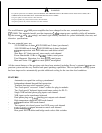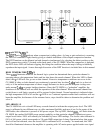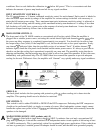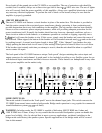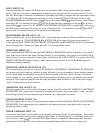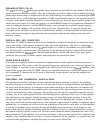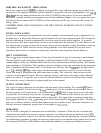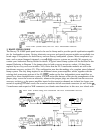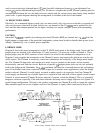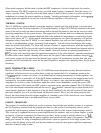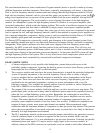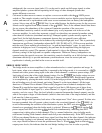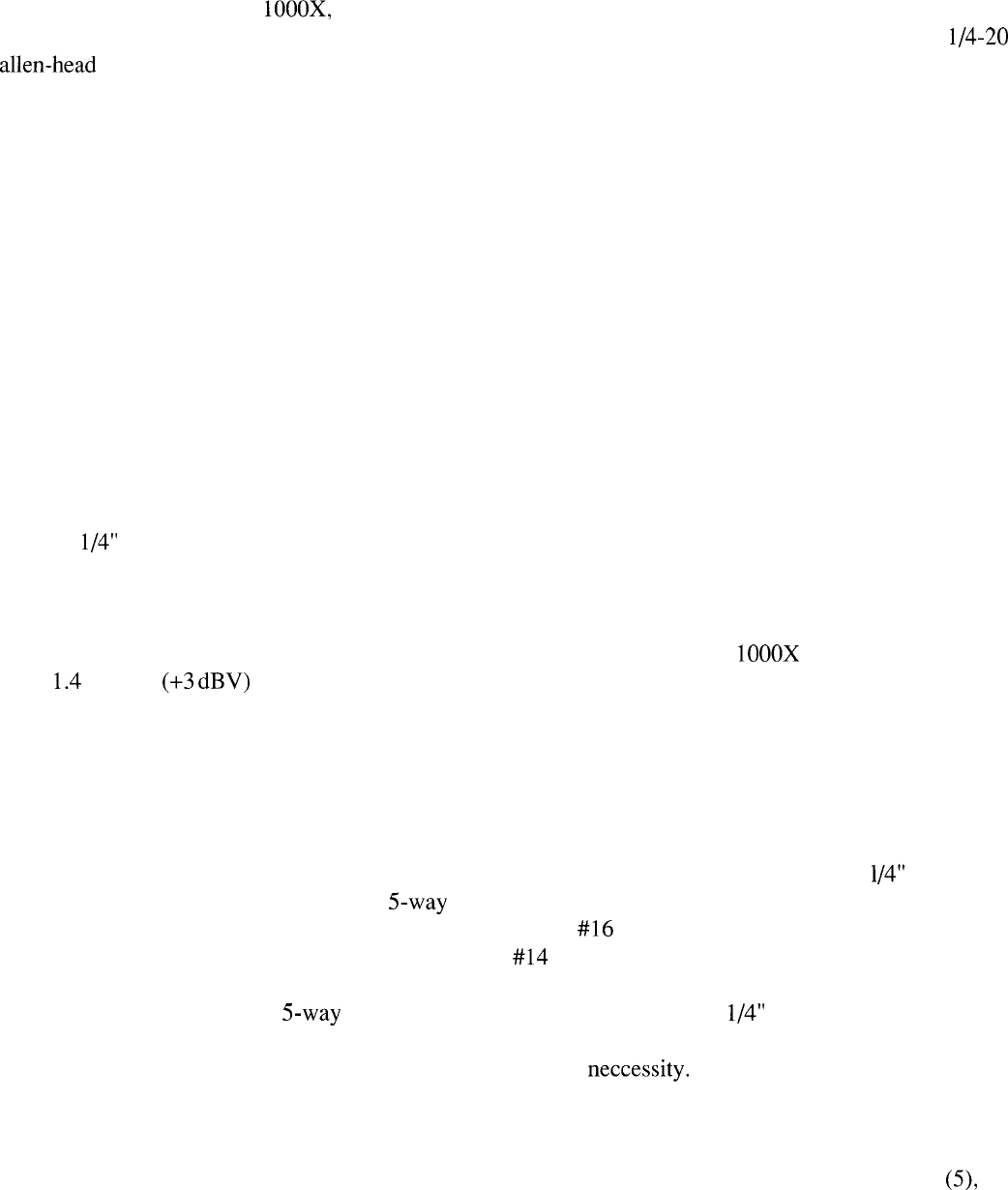
PORTABLE RACK-MOUNT APPLICATIONS
Due to the weight of the CS
1000X,
we highly recommend that some additional support be provided at the
back panel of the amplifier whenever units are installed in a portable rack-mount configuration. Two l/4-20
allen-head
bolts have been provided at the rear of the CS 1000X for this purpose. These bolts should be
attached to a suitable bracketing arrangement to provide this additional support. Also, two guards have been
provided on the rear panel of the CS 1000X to protect connectors and PL cans, and to provide a means for
routing cables.
CAUTION: THESE ARE NOT HANDLES, AND THEY SHOULD NEVER BE USED TO LIFT THE
AMPLIFIER!
STUDIO INSTALLATION
In most low- to medium-power applications, the power amplifier can be mounted in any configuration. It is
desirable that, if at all possible, the power amp be located at the top of an equipment stack. This will prevent
possible overheating of sensitive equipment by the hot air rising from the power amplifier. As a general
rule, most home and studio requirements will never cause high-speed fan operation. If it does, however, this
may indicate that you have not taken the necessary steps to provide adequate cooling. Remember, closed up
in a cabinet, the CS 1000X will have severe cooling problems, even when operated at low power levels.
Inadvertent short circuit or sustained overload usage could also cause temporary thermal shutdown.
INPUT CONNECTIONS
The two
l/4”
jacks marked channel inputs (17) are wired in parallel for ease of connecting to each channel.
The dual (parallel) jacks allow daisy-chaining to additional channels. If RCA-type pin jacks are required, a
suitable adaptor can be used. Shielded cables must be used to minimize hum and noise pickup. The nominal
input impedance is 20 kilohms. This impedance presents a bridging load to the associated driving equipment
and is compatible with the loading limits of most home stereo devices. The CS
1000X
has an input sensitiv-
ity of
1.4
V RMS
(+3
dBV)
for rated output with the front panel sensitivity control set to full clockwise.
Again, this rating is compatible with most home stereo preamps. This sensitivity rating increases as the
control is turned counterclockwise. The new sensitivity rating is indicated by the setting of the calibrated
sensitivity control. It is generally wise to start off with the sensitivity control at the full clockwise setting.
The sensitivity control is discussed in greater detail later in this manual.
OUTPUT CONNECTIONS
Two types of output connectors are provided on the rear panel of the amplifier. Two standard
l/4”
phone
jacks wired in parallel (18) and one set of 5-way binding posts (19) are available on each channel. Due to
the high currents at full-output power, it is recommended that
#16
AWG or larger wire size be used when-
ever possible. For extremely long runs (30’ or greater),
#14
AWG should be used. Smaller wire sizes will
waste power and yield less than optimum results at the speaker. We suggest that in commercial and other
non-portable applications, the 5-way binding posts (18) be used instead of the l/4” phone jacks. The binding
posts are an industry standard, and matching banana plugs are available at most electronic distributors. As
with any electronic equipment, proper phase of the outputs is a neccessity.
OPERATION
The CS 1000X is designed for maximum ease and flexibility of operation, When the unit is installed and
connected as described in the previous sections, operation is as simple as turning on the mains switch
(5),
turning up the sensitivity controls (4) to the full clockwise setting, and then adjusting the associated mixer or
pre-amplification equipment to supply the necessary signal levels to provide the desired output level or until
the front panel DDT active LED indicator shows that the amplifier is compressing. Further increases in
9





